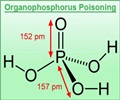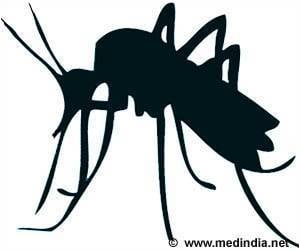The potential application of aloe vera peels as an insecticide has been investigated.

ACS Fall 2023
Go to source) is a hybrid meeting being held virtually and in-person Aug. 13–17, and features about 12,000 presentations on a wide range of science topics.
Turning Trash to Treasure: Aloe Peels as a Sustainable Insecticide
“It’s likely that millions of tons of aloe peels are disposed of globally every year,” says Debasish Bandyopadhyay, Ph.D., the project’s principal investigator. “We wanted to find a way to add value and make them useful.”‘Researchers have identified insecticidal compounds present in aloe vera peels and are investigating their potential as anti-mosquito and anti-tick agents. #AloeVera #Insecticide’





Bandyopadhyay first became interested in the potential use of aloe rinds as an insecticide when he and a colleague visited a local aloe vera production center, where he noticed that insects had left the aloe leaves alone, despite attacking the leaves of other plants. He asked the CEO of the company if he could take the rinds back to his lab — a request that confused the CEO, who initially tried to send Bandyopadhyay home with samples of the company’s products instead. Some home gardeners have begun to use aloe gel as an ingredient in a natural pesticide mixture, along with onions and garlic, but these recipes don’t always include the peels. And currently, on a larger, industrial scale, aloe peels are treated as agricultural waste and largely used to create biomass, which can help improve soil quality at aloe farms. The main downside of this approach is that rotting agricultural waste can release methane and other greenhouse gases into the atmosphere, contributing to global climate change.
So Bandyopadhyay set out to explore the possibility of recycling the peels to develop a natural pesticide that, on its own, could help farmers in areas where insects can be a major threat, such as regions of Africa, the tropical and subtropical regions of the Americas, and the maize and millet fields in India. The new application as a pesticide could also provide an environmentally friendly alternative for disposing of the peels and create additional revenue streams for aloe vera producers. “The goal is to recycle this waste in a meaningful way while making aloe production greener and more sustainable,” says Bandyopadhyay.
To investigate the potential insecticidal properties of the aloe vera peels, Bandyopadhyay and colleagues from the University of Texas Rio Grande Valley first dried out the peels. To keep the bioactivity of the plant unaltered, the rinds were dried in the dark at room temperature by blowing air over them. The researchers then produced various extracts from the peels with hexane, dichloromethane (DCM), methanol and water. The team previously reported that the hexane extract contained octacosane, a compound with known mosquitocidal properties.
In new experiments, the DCM extract showed much higher insecticidal activity against agricultural pests than the hexane extract, so the researchers wanted to analyze it further. The DCM extract was chemically profiled using high-performance liquid chromatography-mass spectrometry, a technique that allows researchers to identify compounds.
Advertisement
The researchers say that these compounds could be contributing to the effects of the aloe rind. In addition, the identified compounds were not toxic, meaning there were no significant safety concerns with the creation of an aloe-peel-based insecticide. Chemical investigation of the methanol and aqueous extracts is still ongoing, but like the DCM extract, both have shown strong insecticidal activity.
Advertisement
Reference:
- ACS Fall 2023 - (https://www.acs.org/meetings/acs-meetings/fall-2023.html)














